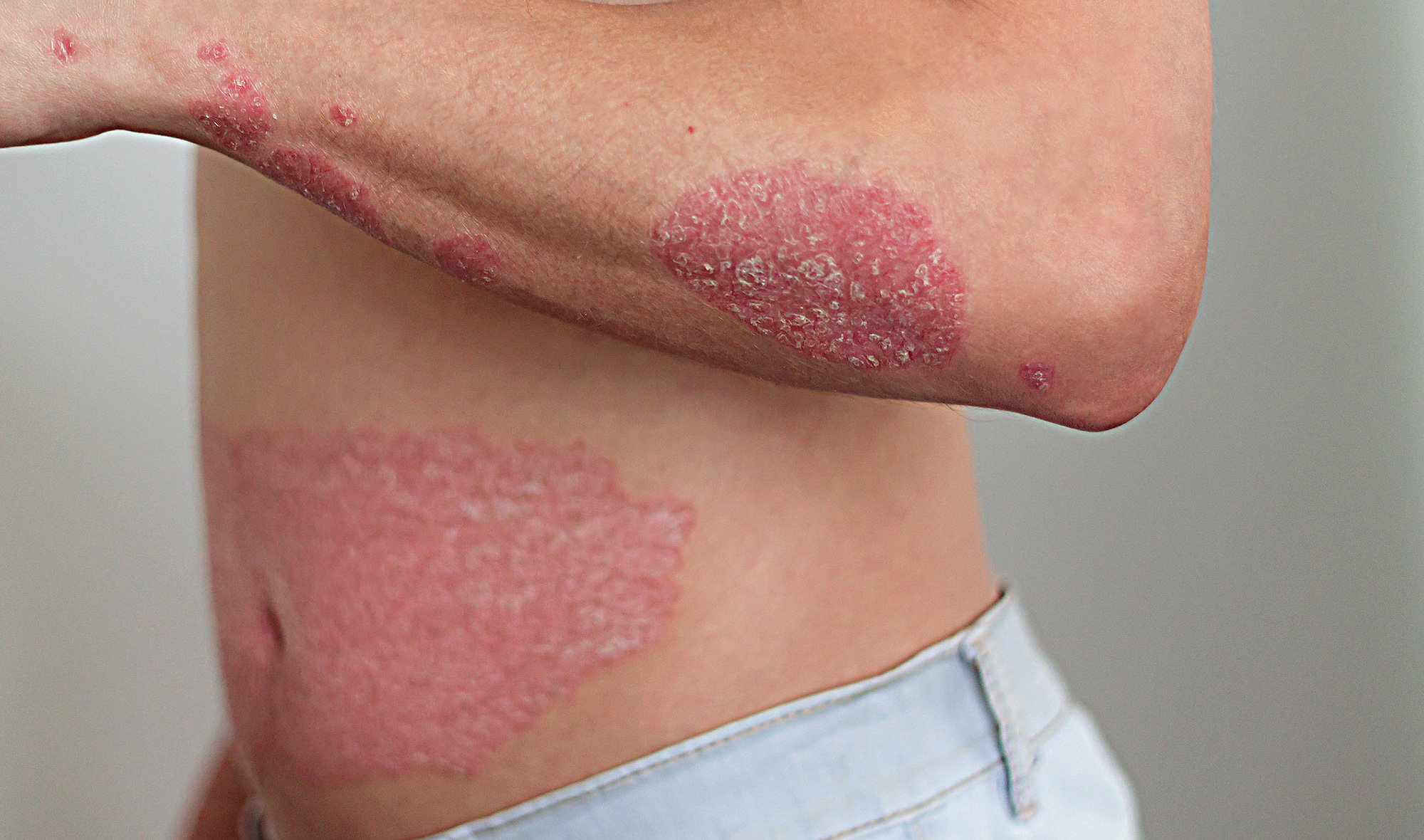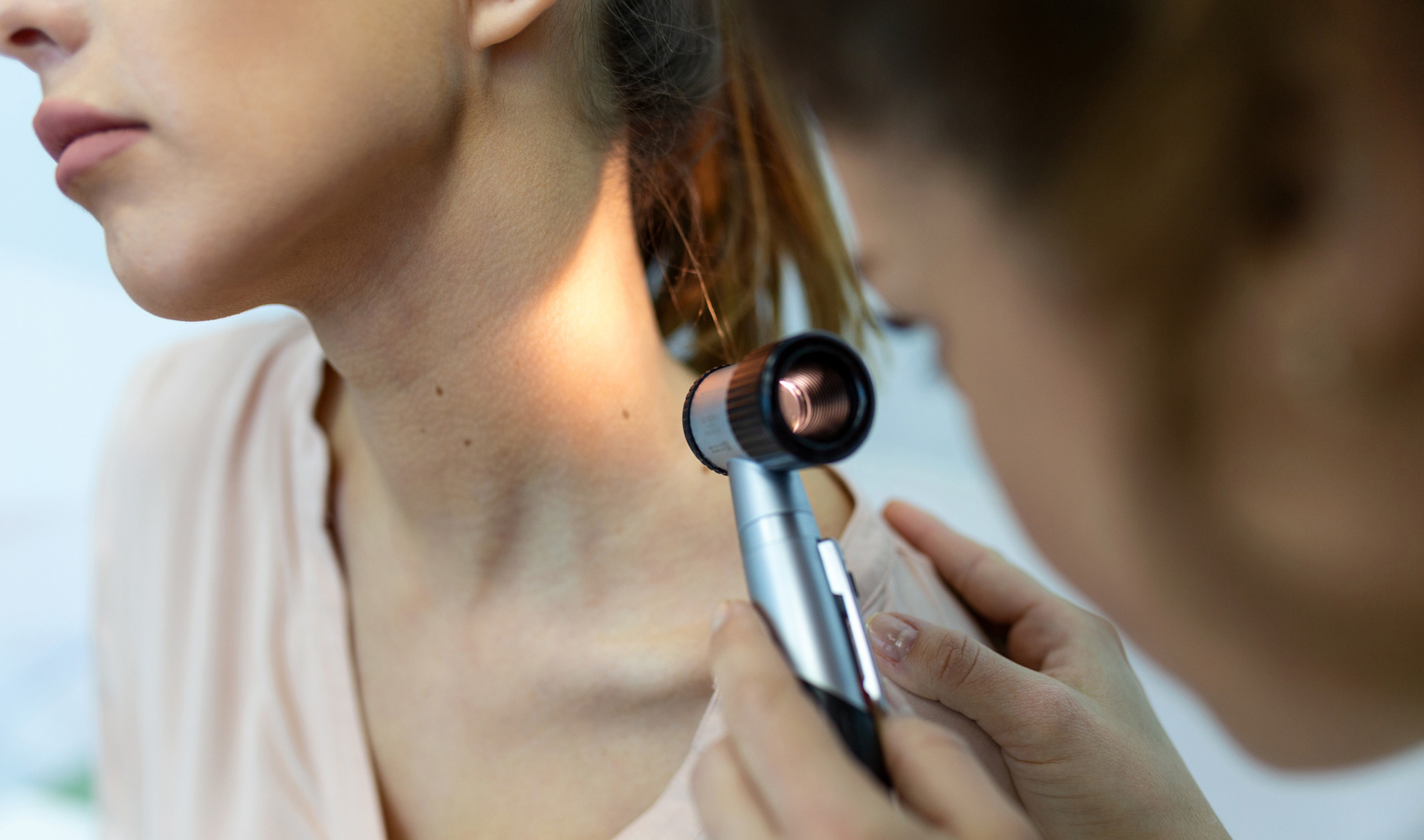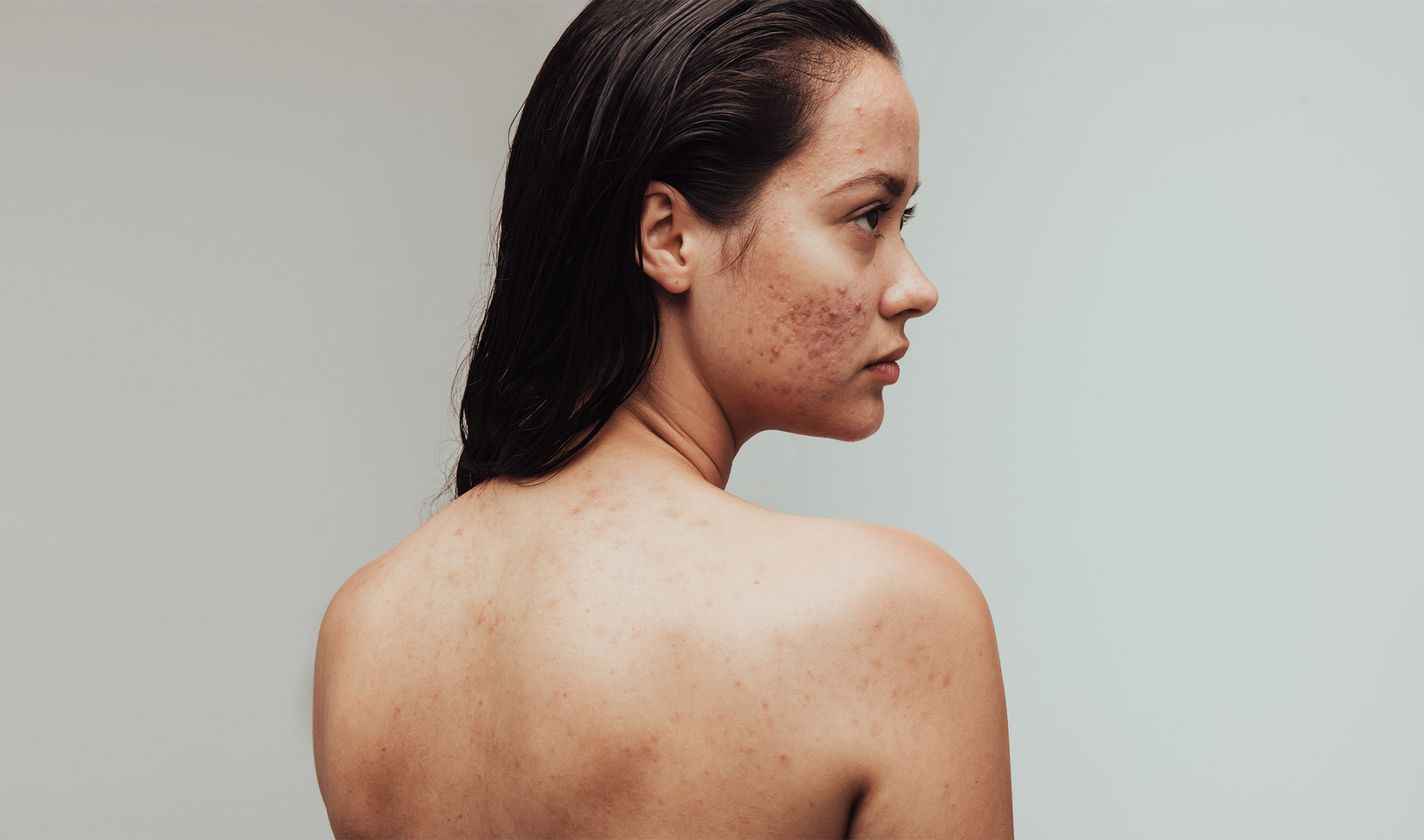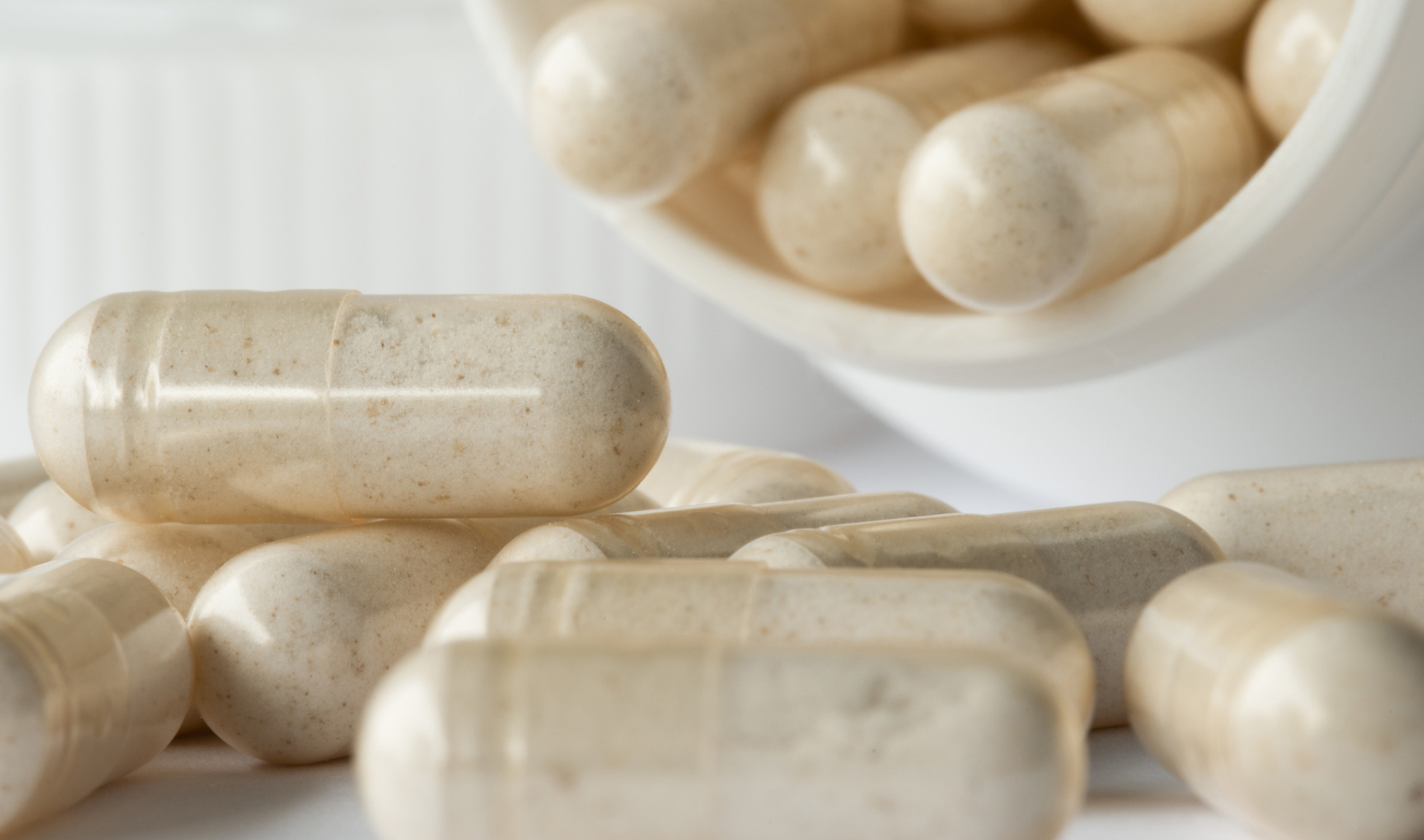Male and female incidence is roughly equal, with onset at any age, but a first attack is most common between the ages of 15 and 25. There is most likely a genetic component to psoriasis with 36% of patients having one or more family members with the condition.
Most commonly, affected skin takes on a scaly appearance with silvery dry, scaly skin flakes forming an angry, red, inflamed patch of skin. Psoriasis is caused by a “pile-up” of skin cells, which replicate too rapidly for the body to slough off in the usual way. In healthy skin there is a constant turnover of new cells dividing, while old skin cells are sloughed off the surface of the skin. With psoriasis the skin cells divide 1000 times more rapidly than usual, causing the typical scaly appearance of the skin.
What causes psoriasis?
What causes this overproduction of skin? There are two main theories. The first explanation suggests that psoriasis is a problem caused simply by the keratinocytes (a type of cell) in the epidermis (inner layer of the skin). The second explanation is that psoriasis is a problem of the immune system – another form of autoimmune illness. This theory is supported by the fact that immunosuppressant drugs improve the symptoms of psoriasis.
Psoriasis doesn’t just affect the skin. In around 10–15% of sufferers, there is also an inflammatory form of arthritis called Psoriatic Arthritis, which affects the joints and connective tissue. Sausage-shaped swelling of the toes and fingers may occur, with hips, knees and spine also affected by this painful, inflammatory arthritis.
There are several different forms of psoriasis, with the “plaquing” form by far the most common, affecting 80–90% of psoriasis sufferers. Flexural psoriasis causes smooth, inflamed skin patches in the skin folds, genitals, armpits and under the breasts. Nail psoriasis leads to discolouring of the nail plate, with pitting and lines across the nails, thick skin under the nails and eventually, loosening and crumbling of nails.
Psoriasis can be an extremely distressing condition. Its highly visual nature, along with the physical discomfort or pain it causes, can cause significant emotional and psychological distress.
Prevention and treatment
1. Psoriasis triggers
Psoriasis triggers are difficult to determine in many cases. There appears to be a genetic component, with an overlay of individual triggers that potentiate the development of acute attacks. These triggers may include stress, skin injury and streptococcal infection, climate change, alcohol consumption, cigarette smoking and obesity. Lithium salts and beta blockers (types of drugs) can also trigger or aggravate psoriasis.
2. Medical treatment
Medical treatment for psoriasis ranges from low-toxicity, low-risk treatments, up to high-toxicity treatments which effectively suppress the symptoms of psoriasis, but with a potentially high cost for the patient. This is called the “psoriasis treatment ladder”. At the bottom end of the ladder are topical ointments and creams. Most commonly these contain coal tar, corticosteroids or vitamin D analogues. Creams and ointments can be effective, but may require multiple applications. You might be able to use a ‘combination treatment’ designed to treat the overactive skin cells as well as relieve symptoms such as itching, redness and irritation, which requires fewer applications and less fuss. Your doctor can discuss the options with you.
Ultraviolet light phototherapy (PUVB) several times weekly for several weeks, is also effective. This treatment can sometimes put psoriasis into remission, but there is an increased risk of skin cancer. Further up the treatment pyramid come systemic treatments with internal medications (pills or injections). Methotrexate and cyclosporin are both immunosuppressant drugs; retinoids (synthetic vitamin A derivatives) are also used. All of these drugs have high toxicity and regular blood and liver tests are vital. Finally new treatments are becoming available that are effective for psoriasis and especially psoriatic arthritis, however side-effects and cost may be a barrier for some patients.
3. Nutritional supplements
Nutritional supplements may decrease psoriasis symptoms. Commonly prescribed are omega-3 fish oils, flaxseed oil, vitamins A and E, chromium, selenium and zinc.
4. Natural alternatives
Topical treatments may also be prescribed by a naturopath as an alternative to corticosteroid ointments. Especially useful are glycyrrhetinic acid from licorice, chamomile, and capsaicin from cayenne pepper.
5. Managing psoriatic arthritis
Regular exercise plays an important role in managing psoriatic arthritis, but before starting an exercise programme consult your doctor. Your daily workout should include at least 15 minutes of stretching and flexibility. Once you are comfortably managing the stretching, you can add in weights or resistance training to help build muscle. Stronger muscles help to reduce stress on arthritic joints. Swimming and water activity is the perfect exercise to increase muscle tone and cardiovascular fitness with no impact on joints. It is important to listen to your body, and only do exercise that is comfortable. Stop as soon as there is pain.
















Community